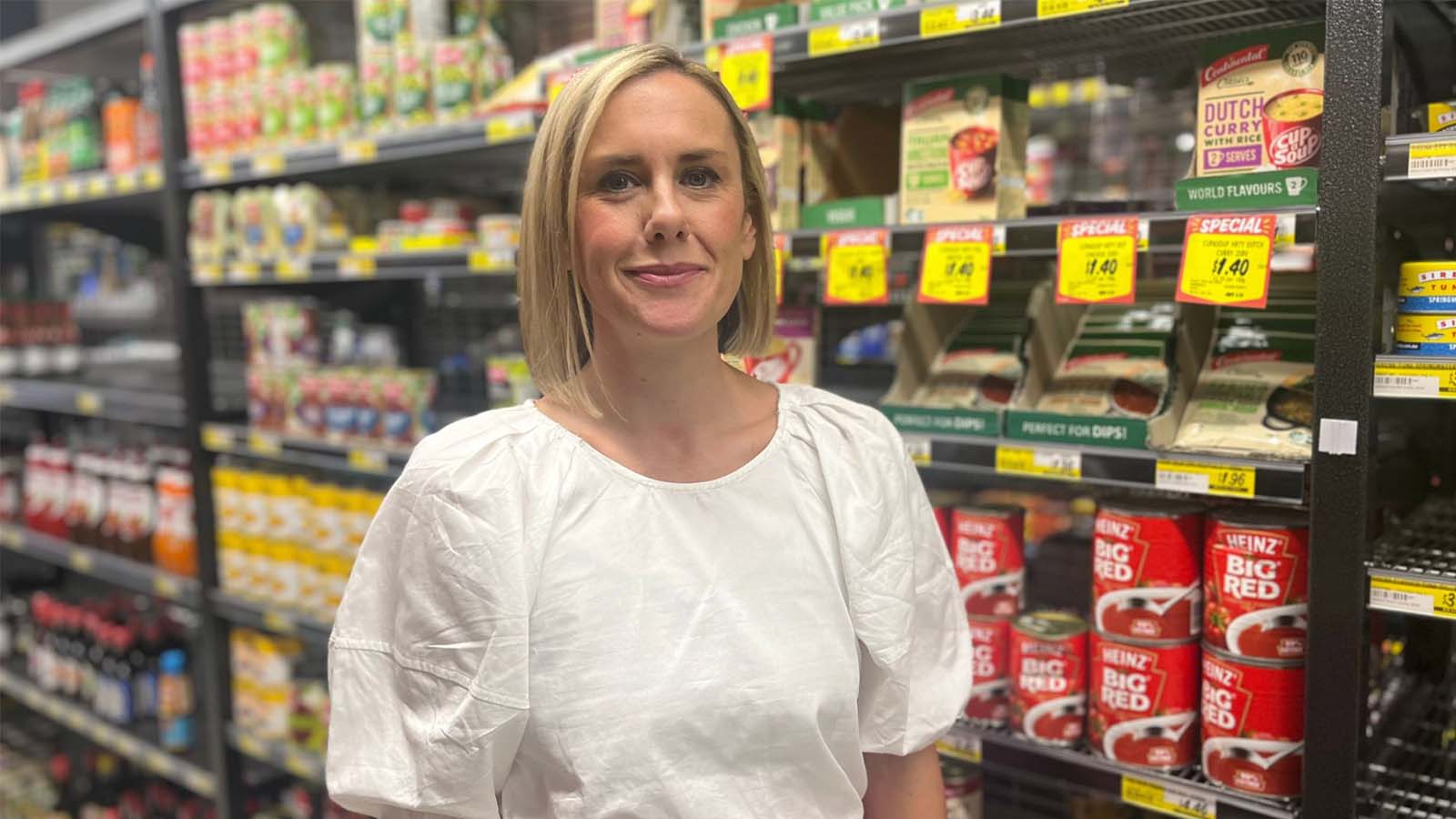Hidden hunger: unmasking the reality of food insecurity
This UOW researcher is on a mission to find a permanent solution to a growing problem
The alarming stat is the result of ongoing research by Dr Katherine Kent from the University of Wollongong (UOW) School of Medical, Indigenous and Health Science, who is dedicated to ensuring food security among Australians.
Food security is defined as everyone having access to safe and nutritious food to meet their dietary needs and food preferences for an active and healthy lifestyle, and ranges from mild, moderate to severe.
“It occurs on a spectrum, so it's not like someone is food secure or food insecure,” Dr Kent explains.
Mild food insecurity refers to people experiencing stress or anxiety around affording food, moderate involves reducing quality of food and severe food insecurity includes skipping meals, going hungry and potential weight loss.
“What it boils down to is, does everyone have the money and ability to put enough healthy food on the table every day? People must be able to make good decisions around the food they eat.”
 Dr Katherine Kent from the UOW School of Medical, Indigenous and Health Sciences
Dr Katherine Kent from the UOW School of Medical, Indigenous and Health Sciences
Identifying the Illawarra’s hunger
Dr Kent has been collecting data across Australia since 2020, beginning with her work at the University of Tasmania which found up to 25 per cent of the population experienced food insecurity.
Her latest research aims to identify the prevalence of hunger in the Illawarra through a range of surveys and focus groups.
“We will be doing a big flyer mailout across the Illawarra – we want to know about what it is like for people accessing enough healthy food… like, does your community have enough farmer’s markets, enough places to garden, what is the availability of fresh fruits and vegetables compared to fast foods?”
It comes as a new fast-food precinct is planned for Shellharbour, introducing three new outlets to a single block.
“Our UOW Resilient and Sustainable Food Systems Research Group has already done food mapping which shows that there is one healthy food outlet to every five fast food outlets in the Shellharbour local government area. People already struggle to make healthy food choices because they have an abundance of unhealthy food options available to them,” Dr Kent says.
“The reason it’s important to [collect data on healthy food access in the Illawarra] is because local policymakers and people in positions of power, I think, anecdotally, know that people are struggling. But in my research in other contexts like Tasmania, it’s important to generate a figure to make this reality of hunger more tangible.”
Dr Kent says that food consumption is also a “litmus test” for overall financial security and can be used to identify broader economic problems.
“People have to pay their mortgage, their rent, their bills. But families can always just cut down on their groceries by buying cheaper food or less healthy food or skipping meals, because food is the most flexible part of most people’s budgets.”
Beyond the 'broke student' cliche
University students are one of the worst affected demographics when it comes to facing hunger.
Dr Kent says while there has always been the stereotype of ‘broke’ university students eating simple meals, her research at the University of Tasmania (UTAS) and UOW has shown year-on-year growth in food insecurity among students.
A survey of more than 1000 UTAS students showed that more than half of them were going hungry, and data from UOW showed food insecurity led to poor diets among students.
“This means these students had skipped meals or experienced hunger in the past 30 days. To me, this is a huge concern, because we could look around our [UOW] campus and see that potentially our students are coming to school hungry, meaning they may not be able to deliver academically,” she says.
“International students in particular are doing it really tough when it comes to food, because not only do they have the financial challenges, but when they go to the shop, it can be difficult for students who are from an international background to find food that is appropriate for them.
“Even if you just walk up to the food pantry on campus, you will see there is a line of 50, 60, 70 people queuing up around the block, and fruit and vegetables are always the first thing to go.”
Additionally, Dr Kent’s latest research with colleagues in UOW’s nutrition and dietetics teams suggests that up to 75 per cent of students on placements are struggling to put food on the table.
“We are expecting students to engage meaningfully with their education, but at the same time, they are going hungry. It’s hard to reconcile that.”
 Fast food is becoming more accessible as people are priced out of fresh fruit and veg, Dr Kent says. Picture: Unsplash
Fast food is becoming more accessible as people are priced out of fresh fruit and veg, Dr Kent says. Picture: Unsplash
Long term problems require long term solutions
Despite Dr Kent’s findings Australia has no central body or consistent research to investigate food insecurity, with the most recent survey conducted in 2012.
“When we think about what is being done to support people who are food insecure, the government's response is often to provide more money for emergency food relief. But if you think about the definition of food insecurity, providing emergency food relief is not ever going to solve food insecurity – it is like a band aid response,” Dr Kent says.
“There are other policy changes that would be more impactful than supporting people to put food on the table. For example, raising the rate of government support payments to a livable standard would support people to put food on the table and data collected during the Covid-19 pandemic, when the JobSeeker rate was doubled, showed that.”
Dr Kent says food insecurity leads to more than just the feeling of physical hunger, and the short and long-term implications can be major.
“Food insecurity is a powerful determinant of health and people who experience it report significantly worse physical and mental health outcomes,” she explains.
“People make poor dietary choices because that’s the only food they can afford. In the long run that increases risk of cardiovascular disease, diabetes and in the short term it impacts people’s mental health because you’re stressed about getting food on the table, and the cycle is perpetuated.”
Dr Kent would like to see more government intervention at all levels, with a department dedicated to researching and managing food security across the country.
“For about 20 years, public health nutritionists across Australia have been arguing and developing policy briefs and advocating for, there to be serious investment in supporting healthy food access through a minister for food and having a food policy for Australia,” she says.
“There needs to be a department of government who are responsible for food related issues and have a broad portfolio of interventions that they can do.”
-
Dr Kent’s research demonstrates UOWs commitment to the United Nations Sustainability Development Goals (SDGs), in particular SDG 2: Zero Hunger, SDG 3: Good Health and Well-being and SDG 10: Reduced Inequalities.